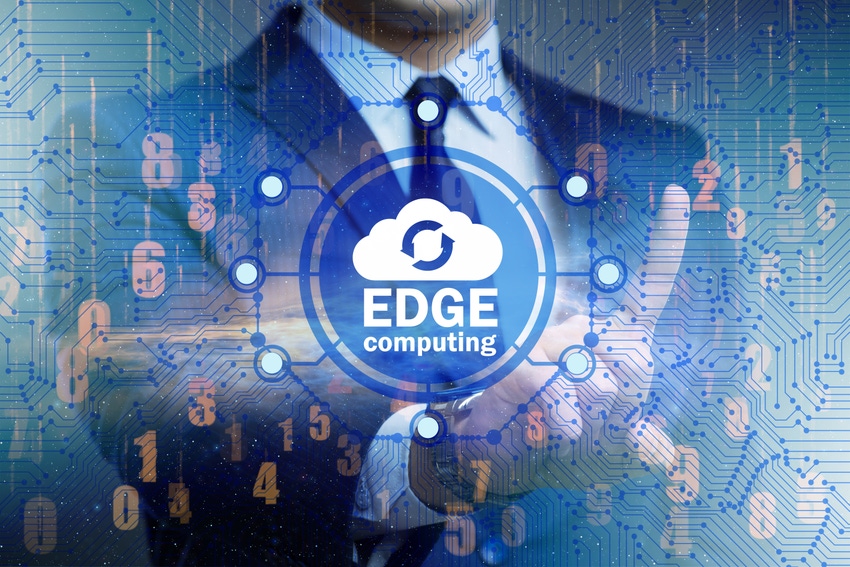The agility, scale, automation, and low latency demands of 5G infrastructure roll outs means that Telcos, Communication Service Providers (CSPs), and their ecosystem need to bring in cloud-like operational advantages to the telco 5G world.
November 11, 2020

Telecoms.com periodically invites expert third parties to share their views on the industry’s most pressing issues. In this piece Sirish Raghuram, Co-founder & CEO of Platform9 takes a look at the rapidly growing edge computing sector.
Edge computing is rapidly emerging as the new cloud. According to Gartner, by 2022, more than 50% of enterprise-generated data will be created and processed outside the data center or cloud (Gartner report on edge). This poses a significant challenge for cloud computing giants like Amazon Web Services and Microsoft Azure whose services are not designed to operate in massively distributed and remote edge environments. What these cloud giants might not realize is that their stronghold is increasingly being threatened by rapidly growing edge use cases and new architectural and business models being pioneered by emerging startups.
Accelerating this market shift is the telco 5G edge use case — one with an enormous market opportunity (IDC forecasts 1.1 Billion 5G connections by 2023) — fueled by the need to run edge cloud services at a massively distributed scale. Further, similar to the way the pandemic catapulted a new reliance on the cloud for remote work and expanded e-commerce, the race to 5G has been accelerated by COVID-19 as well. And, as telcos deploy new infrastructure to handle the traffic explosion they see, it makes more economic sense for them to adopt next gen architectures for Packet Core and Radio Access Networks and future proof their networks.
The agility, scale, automation, and low latency demands of 5G infrastructure roll outs means that Telcos, Communication Service Providers (CSPs), and their ecosystem need to bring in cloud-like operational advantages to the telco 5G world.
It’s important to understand the reasons causing these fundamental changes and how newer emerging cloud/edge architectures address these requirements and further accelerate the roll-out of 5G.
All-conquering public cloud providers have less market dominance beyond hyperscale data-centers
Throughout the 2010s, the three large public cloud providers have been all-conquering, relentlessly adding infrastructure capacity, recruiting 1000s of software developers, and pouring in billions of dollars from “big-tech” businesses (retail, PCs and ads) to subsidize the adoption of cloud computing; which ultimately has culminated in a massive advantage of hyperscale.
What is this hyperscale advantage that the big cloud providers have? Put simply, the hyperscale cloud providers are running 100x-1000x as much data-center capacity as most large enterprises; and they invested heavily in internal IP and automation to provision, monitor, troubleshoot and upgrade their cloud services, all of which translates into unmatched economies of scale. Those economies of scale cause enterprises to outsource their infrastructure to the hyperscale providers, further increasing the latter’s advantage.
Make no mistake: this advantage is only possible because all three hyperscalers are built by mega-cap technology companies that have the ability to invest cash as rarely seen in history. The fairness of this will be debated by governments and society in time to come, but there is no doubt that the hyperscale advantage exists.
However, the telco industry is a different ball game. The uniform software stack is an advantage that extends to the edge, but the main economic advantage of hyper-scale is irrelevant there. The public cloud providers are finding that this is a new battleground where they don’t automatically win because of their hyper-scale advantage. Public cloud providers are attempting to treat network service providers as just another enterprise vertical and asking them to adopt the public cloud for the same reasons that everyone else has.
5G is changing the game.
5G will distribute workloads to run at the Edge, reshaping cloud computing and the user experience
5G is a major evolution in the history of telecom network infrastructure. Among many innovations, one of the key changes is that 5G uses a greater number of smaller radios that are more distributed than 4G or earlier network technologies. This increased distribution offers many benefits to the end customer, from greater network speed and reliability, to new experiences that are now possible because of reduced latency.
Powering these new experiences will be software applications that are running using a distributed architecture, with a greater number of components running at the network edge. This is in contrast to the traditional cloud computing architecture used from 2010-2020, when the cloud was largely used as the powerful central hub in a “hub and spoke” architecture.
The distributed nature of 5G requires network providers to deploy compute infrastructure and 5G software at a large number of radio sites and supporting packet-core sites. Public cloud providers are moving towards a model of offering “fully integrated hardware appliances” that offer a slice of their public cloud experience, to be deployed and run in such sites. Meanwhile, network providers have just spent 15 years migrating from a hardware driven appliance model into a software defined architecture.
At the distributed edge, the hyperscale economic advantage of the public cloud providers simply disappears. At the same time, many telcos are recognizing the advantage of open-source technologies such as Kubernetes as a potential foundation for 5G deployment. Unlike hardware based predecessors, the cloud-native and open-source nature of Kubernetes and associated technologies allows for massive scaling, open source community innovation, lowered infrastructure footprints reducing costs, automation of deployments to remote edge sites, and fast provisioning of profitable services without legacy overhang or expensive lock-in.
Why then should the telcos — looking ahead to the future of 5G deployments — go back in time and deploy “hardware appliances ” from public cloud providers or incumbent telco providers, when open-source Kubernetes provides much greater benefits and can meet 5G requirements without the prohibitive cost, cumbersome and slow roll-outs, and public cloud lock-in?
Faster network speed and more agility are only the start of 5G’s benefits to the consumer and business user — and the network provider. The bigger benefit is money to be made at the edge. More differentiated services for both customer types are possible as network providers take advantage of the 5G’s low latency to deliver on the possibilities of latency sensitive IOT, AR/VR, and other monetizable edge services — both consumer mobile as well as enterprise use cases.
5G/Edge Distributed Applications Will be Built on Open Community Standards and APIs
Throughout the last decade, software developers looking to get greater efficiency and automation gravitated towards the public cloud as a key accelerator vs depending on slow internal IT teams. However, as the “hub and spoke” architecture gives way to an era of more distributed architectures, software developers can no longer depend on the old model for highly distributed, low-latency, cloud-native applications.
Kubernetes will play a key role in unlocking new distributed applications and business models at global scale. With its cloud-native architecture, built-in resilience, and scalability, Kubernetes will become the de-facto cloud API that will supersede the old cloud models.
New profitable application deployment can proceed driven by the business needs of the CSP’s with infrastructure flexibility and freedom of edge locations without being constrained by public cloud vendors.
Consider this distributed scale challenge: there are ~100 regions globally managed by the three large providers. But the rollout of 5G networks will mean that within each metropolitan region, there will be 100s of sites with compute infrastructure that are being orchestrated by Kubernetes as the cloud technology. At global scale, this means there will be 100 – 1000x as many “local” cloud regions available for consumption via Kubernetes. This will bring fresh new players and innovation into the 5G market that solve the unique challenges of the telco deployments to avoid the lock-in and outdated models of the incumbent telco providers or the hyperscale cloud providers.
5G and Edge Computing are the new cloud disruptors – welcome to the future!
Today, we are seeing the emergence of yet another major shift in our industry towards edge computing. The business opportunities that edge computing enables is going to be massive with use cases ranging from retail edge, automotive edge, telco edge, and smart cities.
Powering these 5G infrastructure rollouts will be cloud-native infrastructure technologies such as Kubernetes and emerging distributed edge architectures that address unique requirements of the telcos including higher performance, distributed scale, stringent SLAs, and lower latency.
 Sirish Raghuram is the co-founder and CEO of Platform9. Having experienced virtualization, IaaS and cloud-native industry transitions first hand, Sirish believes that open-source represents the future of enterprise hybrid clouds. Sirish is passionate about enabling IT Ops in large enterprises to be successful with their cloud initiatives — being able to easily adopt and manage VMs and Kubernetes at scale, across ANY infrastructure, with minimum management overhead and without breaking the bank. Prior to founding Platform9, Sirish was an early engineer at VMware who went on to technical and management roles. His work at VMware led to several products, features and patents.
Sirish Raghuram is the co-founder and CEO of Platform9. Having experienced virtualization, IaaS and cloud-native industry transitions first hand, Sirish believes that open-source represents the future of enterprise hybrid clouds. Sirish is passionate about enabling IT Ops in large enterprises to be successful with their cloud initiatives — being able to easily adopt and manage VMs and Kubernetes at scale, across ANY infrastructure, with minimum management overhead and without breaking the bank. Prior to founding Platform9, Sirish was an early engineer at VMware who went on to technical and management roles. His work at VMware led to several products, features and patents.
Read more about:
DiscussionAbout the Author(s)
You May Also Like








.png?width=300&auto=webp&quality=80&disable=upscale)


_1.jpg?width=300&auto=webp&quality=80&disable=upscale)


.png?width=800&auto=webp&quality=80&disable=upscale)